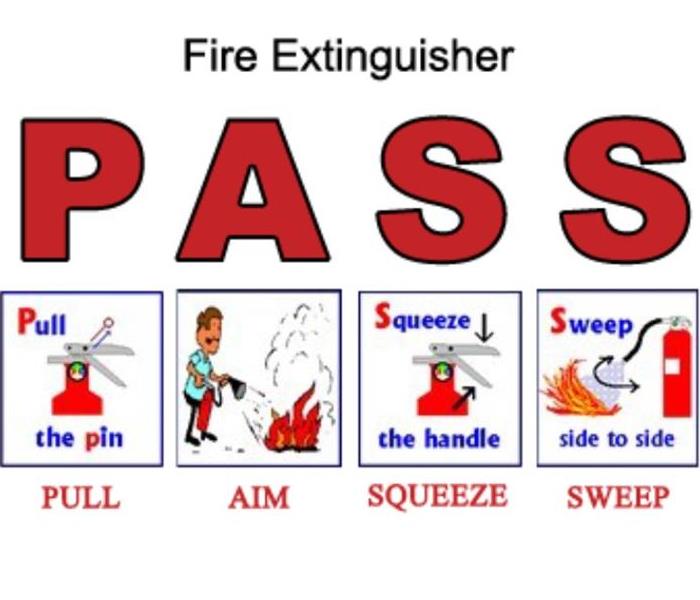Fire Extinguisher Safety: P.A.S.S. It On!
3/22/2024 (Permalink)
Do you follow safety guidelines and keep a fire extinguisher in your home? If so, are you certain you have the correct type to fight the fire? A fire extinguisher should be kept in your garage, kitchen, and on each floor of your home. Whether you already own one or are about to purchase one, learn about the different types of extinguishers for the application.
Below are the four basic types of extinguishers:
- Class A extinguishers put out fires in ordinary combustibles, such as wood and paper.
- Class B extinguishers should be used on fires involving flammable liquids, such as grease, gasoline, and oil.
- Class C extinguishers are suitable for electrically energized fires.
- Class D extinguishers should be used on flammable metals and are typically specific for the type of metal in question.
Most home fire safety experts recommend medium size, multipurpose fire extinguishers that are labeled as suitable for use on class A, class B, and class C fires.
You and other potential users in your household should thoroughly read the extinguisher’s instructions on a periodic basis. A professional fire equipment supplier should inspect each extinguisher annually.
Only use a fire extinguisher if these four conditions are true:
Often times you’re much better off to let professionals handle any fire. Only use an extinguisher when:
1) the fire is confined to a small area, and is not growing
2) the room is not filled with smoke
3) everyone else has exited the building
4) the fire department has been called.
Remember the P.A.S.S. word!
Most household fire extinguishers operate using the following P.A.S.S. technique:
- PULL: Pull the pin. This will also break the tamper seal.
- AIM: Aim low, pointing the extinguisher nozzle (or its horn or hose) at the base of the fire.
- SQUEEZE: Squeeze the handle to release the extinguishing agent.
- SWEEP: Sweep from side to side at the base of the fire until it appears to be out. Watch the area. If the fire re-ignites, repeat steps 2 - 4.
If you have the slightest doubt about your ability to fight a fire.... EVACUATE IMMEDIATELY!
Important! Once the seal on a fire extinguisher has been broken, it must be serviced before the next use!






 24/7 Emergency Service
24/7 Emergency Service
